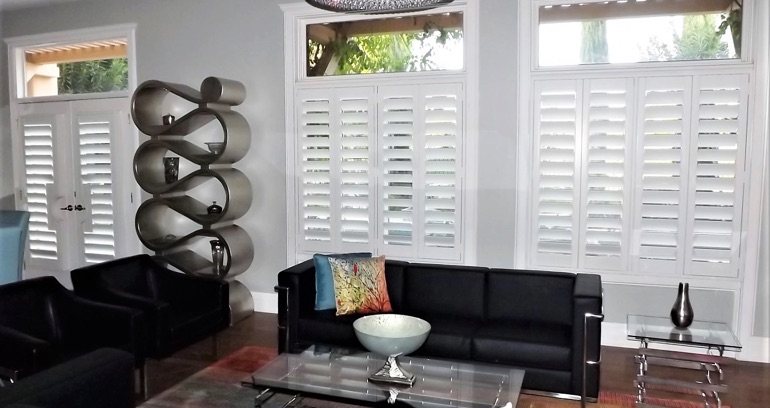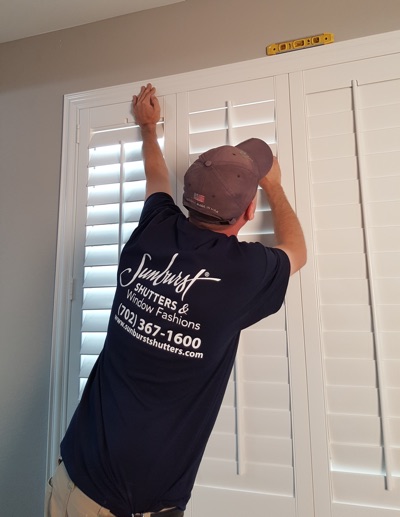
Are DIY Shutters Hard to Do?
Doing home improvement projects by yourself in Las Vegas is a lot easier than it used to be. Since you have a lot of resources easily available to walk you through every step, many once-difficult projects are now very doable.
There are outliers, though – jobs that may be inconvenient, time-consuming, or just too difficult to do by yourself. One job that might belong to that category is putting in DIY plantation shutters.

Below are just a few of the problems that might come up when you try to put in shutters as a DIY job.
Measuring Your Windows
Though it may seem easy at a glance, getting the exact window measurements for plantation shutters can be a little tricky. As one of our team members says, “There are a thousand wrong ways to measure windows, but only one right way.” There’s a good amount of ways windows can vary that can impact how you need to measure.
Do you know if your shutters need to be on an outside or inside mount? What’s the thickness of the shutter frame you’re thinking about and how far into the window opening will it need to sit? What style of frame is best for tilt-in windows, crank windows or sliding windows?
Each of these can have an impact which kind of shutters and frame are best for you. That also changes how you measure your windows.
Buying DIY Shutters
The next problem area for DIY shutters can appear in the buying process. As with the variation in windows, there’s a lot of variation in shutters, and if you’re on your own, it can be easy to purchase the wrong product. Here are a few easy to make mistakes if you’re a DIYer:
-
Buying shutters made of the wrong material. For example, buying hardwood shutters for a space in your home that needs to have a moisture-proof window treatment.
-
Picking a shutter option that impedes window movement, meaning you can’t fully open the window.
-
Getting a shutter with a frame that doesn’t work well with your specialty window such as your sidelight windows.
When talking to DIYers, we’ve found there might be some added confusion with shutter terminology. Talking to a shutter company helps avoid any confusion, so you get exactly what you need.
Installing DIY Shutters
The hardest part of DIY shutters, like with any home project, is in actually putting them in.
First off, shutter installation is a precise procedure, and a small mistake in measuring at the start or in hanging a bracket can throw a wrench in the whole project. Shutters can also be a little heavy; depending on the material and the position of your window, lifting a shutter can be exhausting and in some cases hazardous.

The majority of shutter DIYers are unaware that it’s fairly common for shutters to not exactly fit your window frame. This is mainly due to the fact that few window frames are a perfect square. Installing the shutter flush to one edge of the window could result in the shutter looking crooked and making gaps. It’s typical for an installer to caulk a ¼ or ½inch gap, and if you’re doing it alone a caulking job could be a little too much.
Finally, when you do a shutter installation yourself, you don’t have a safety net. If a shutter company installs your shutters for you, they’ll almost always guarantee the project with a warranty. However if something goes awry when you try to install yourself, you’re not likely to be covered for damage to the shutters or any other part of your house.


